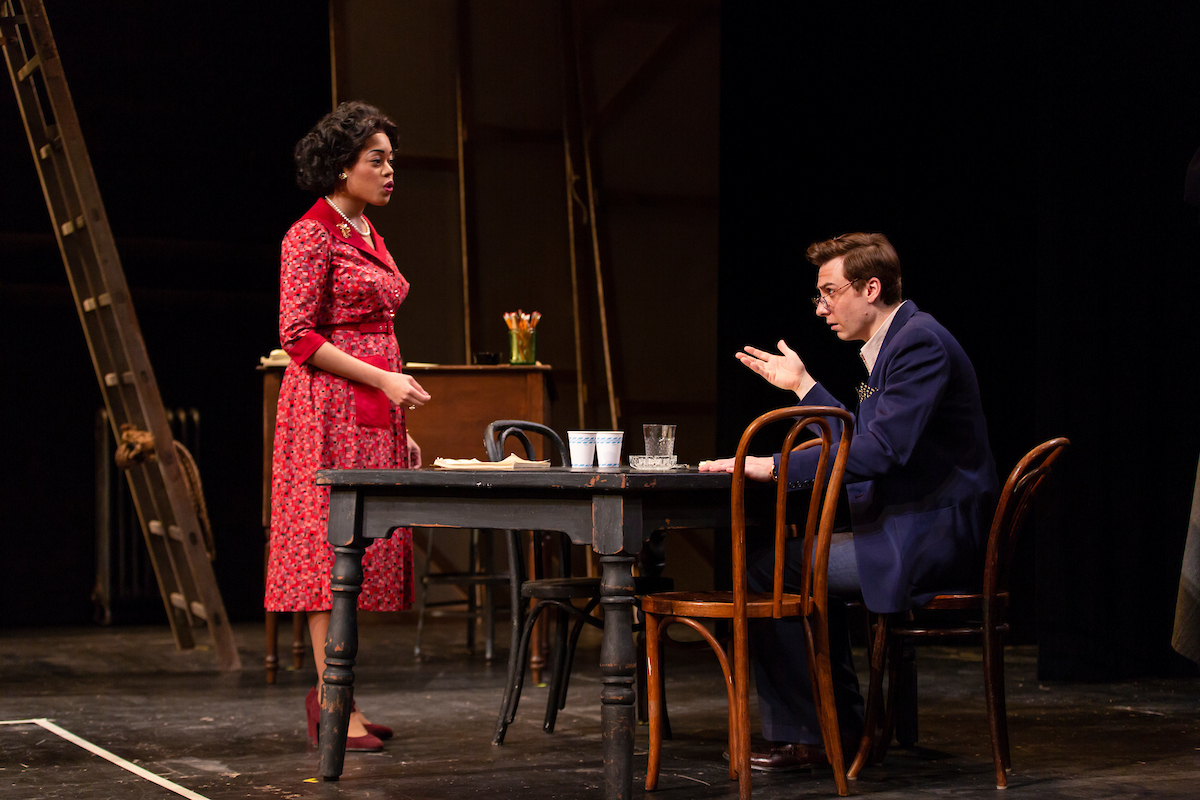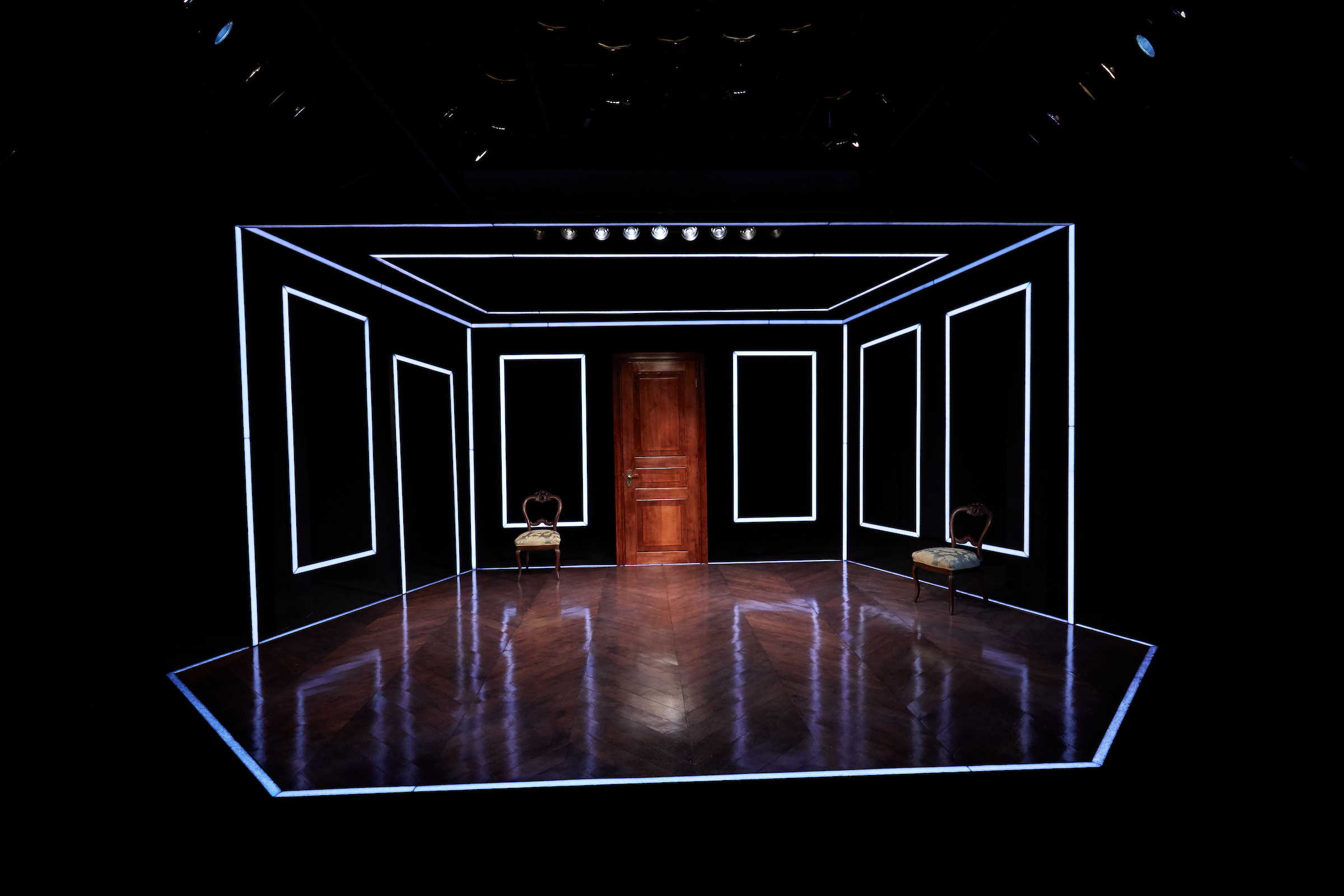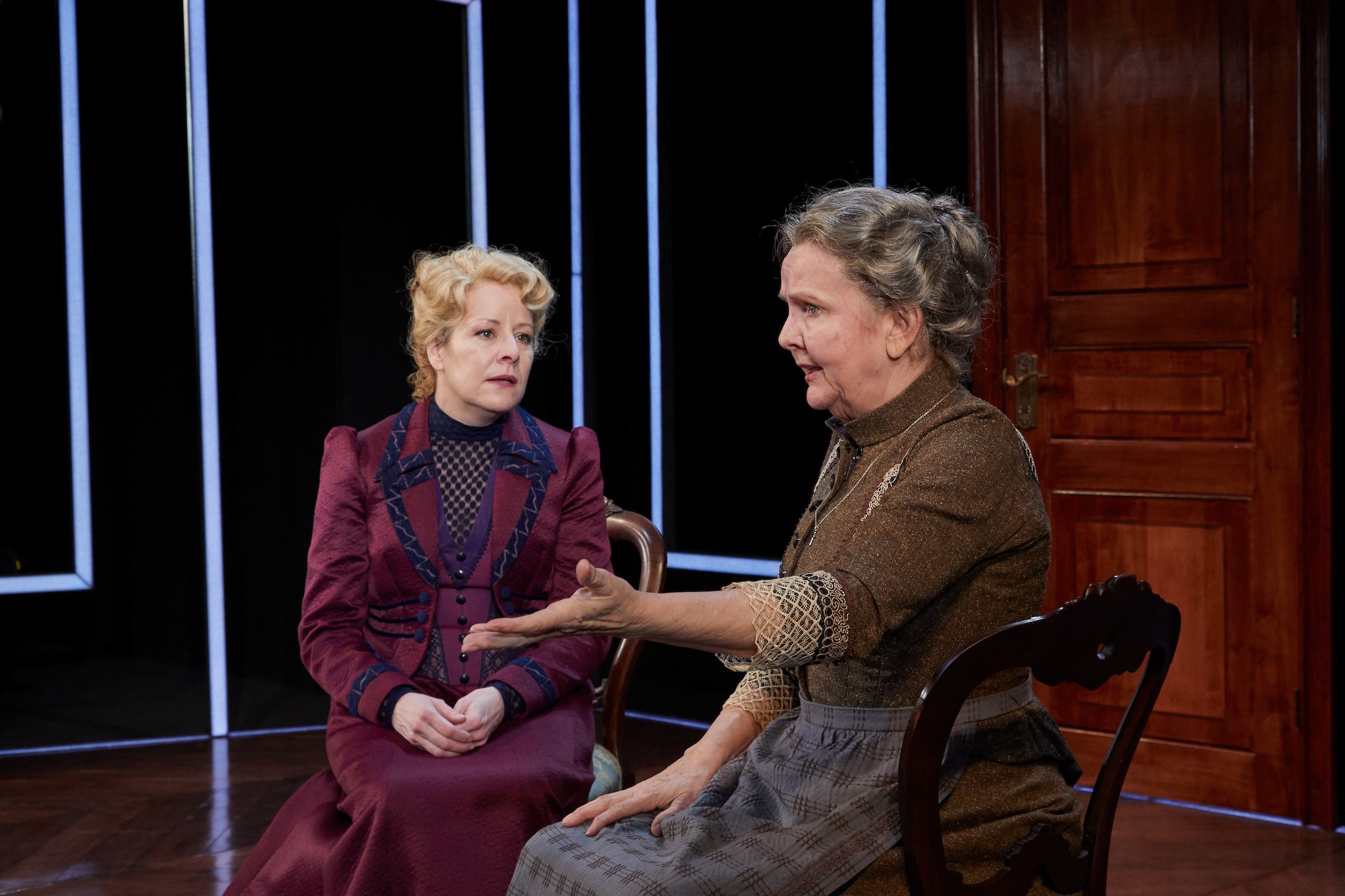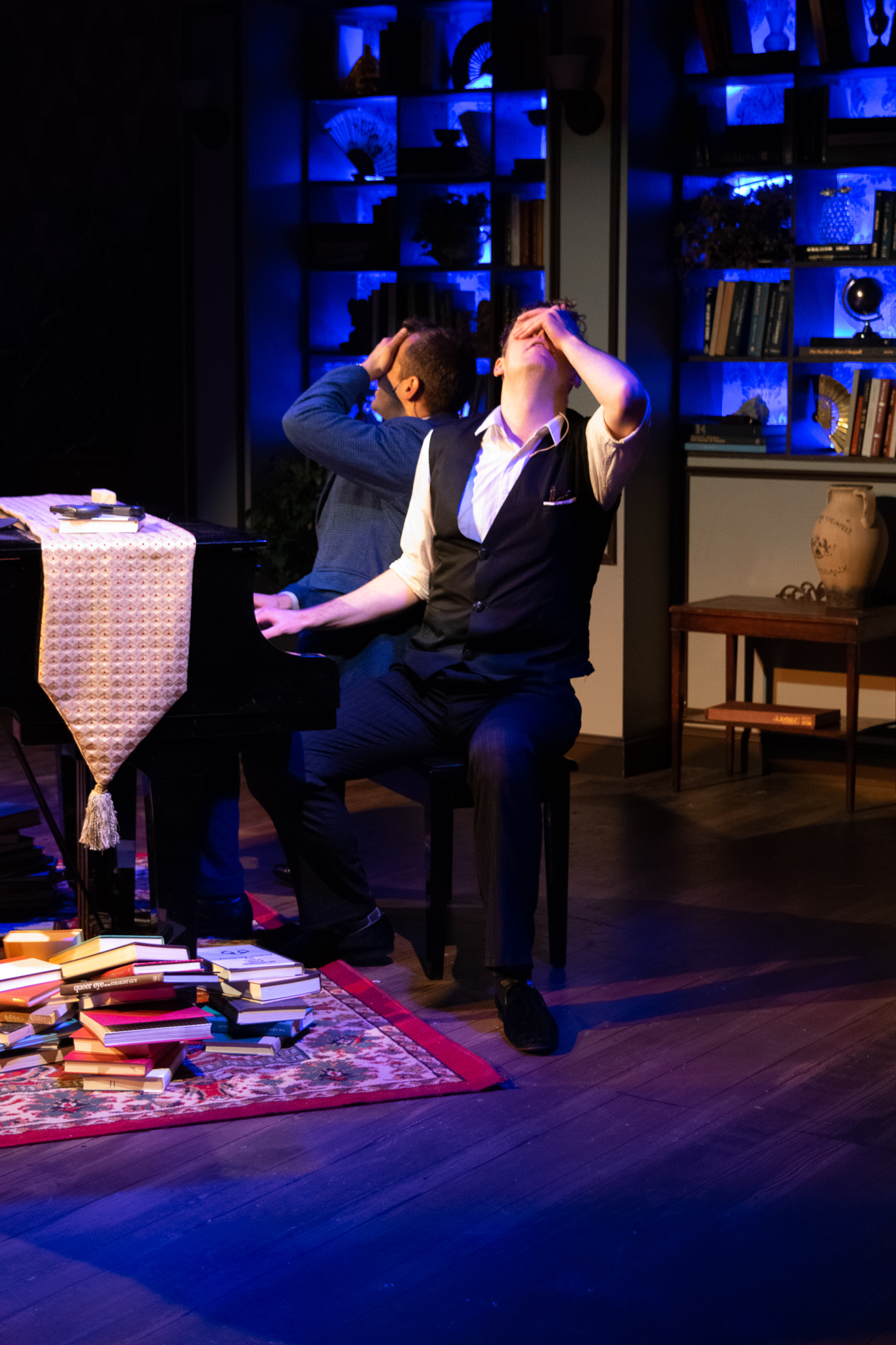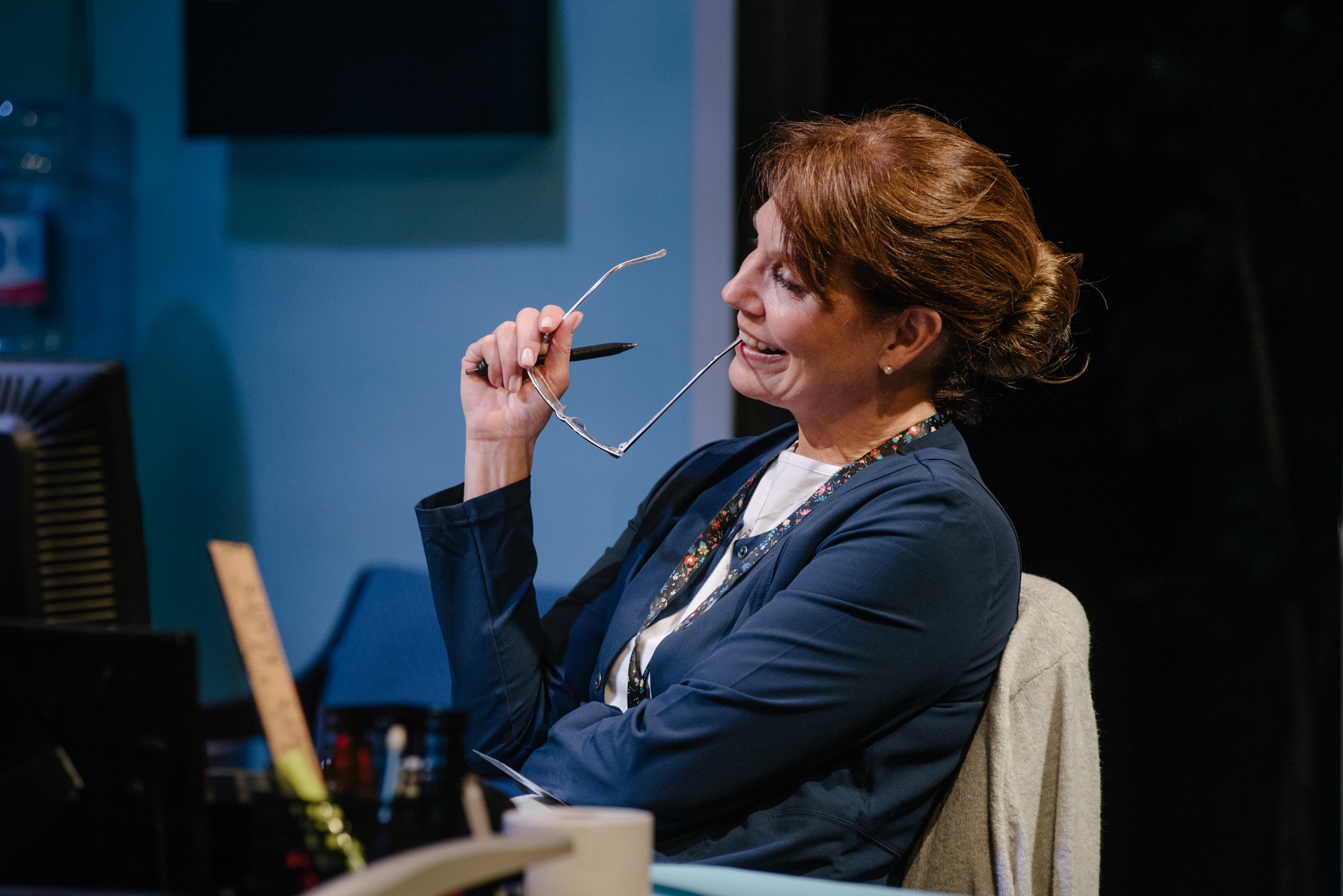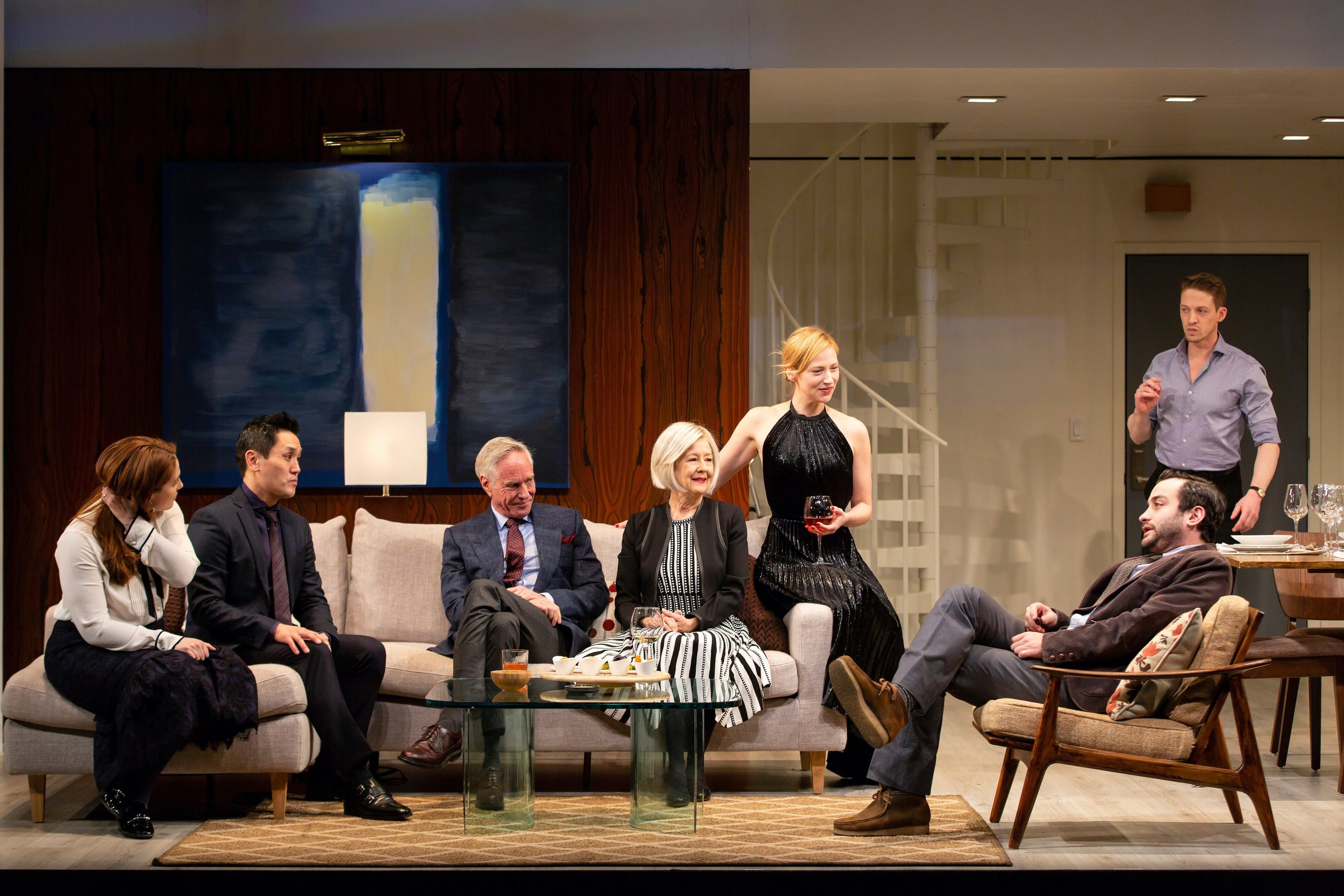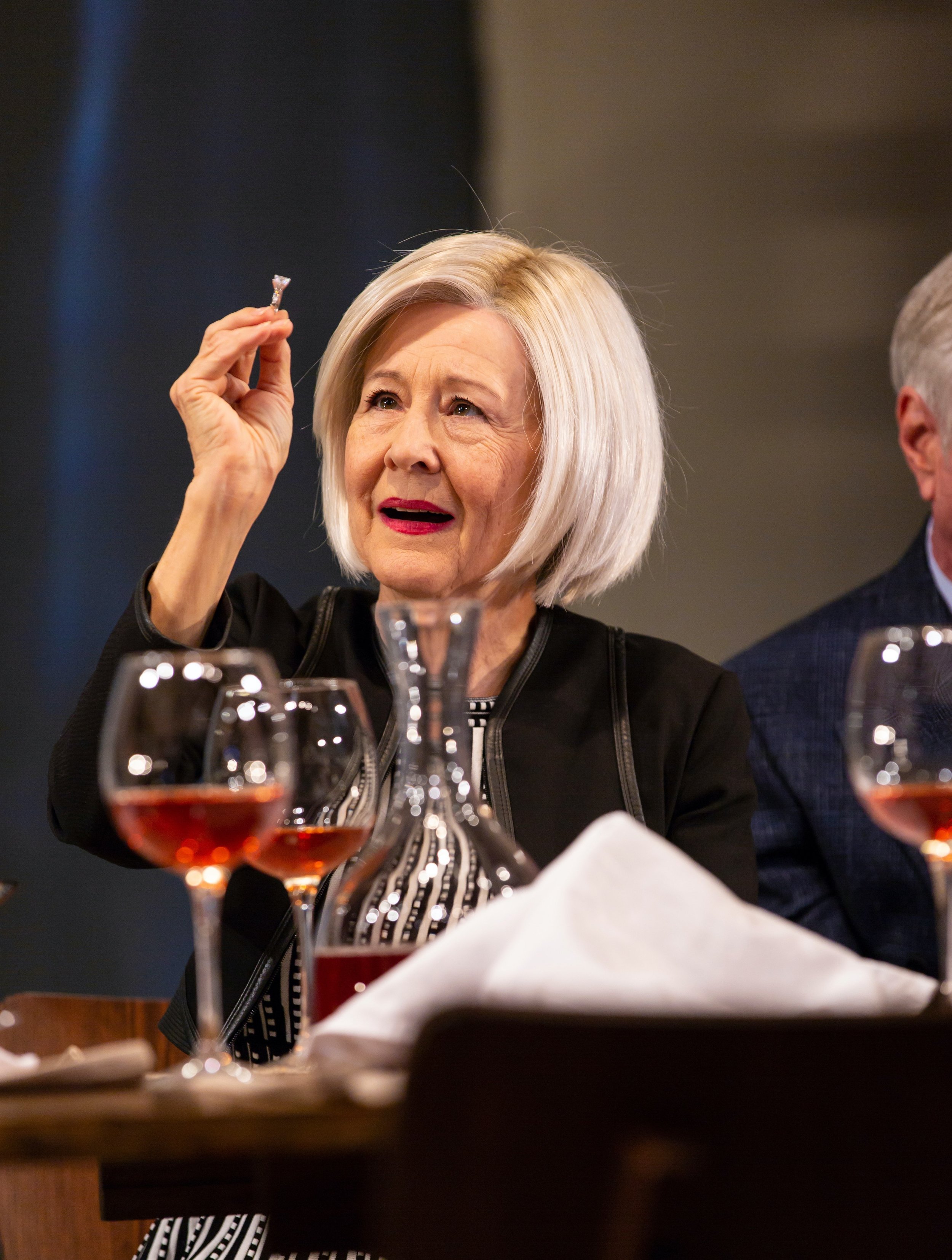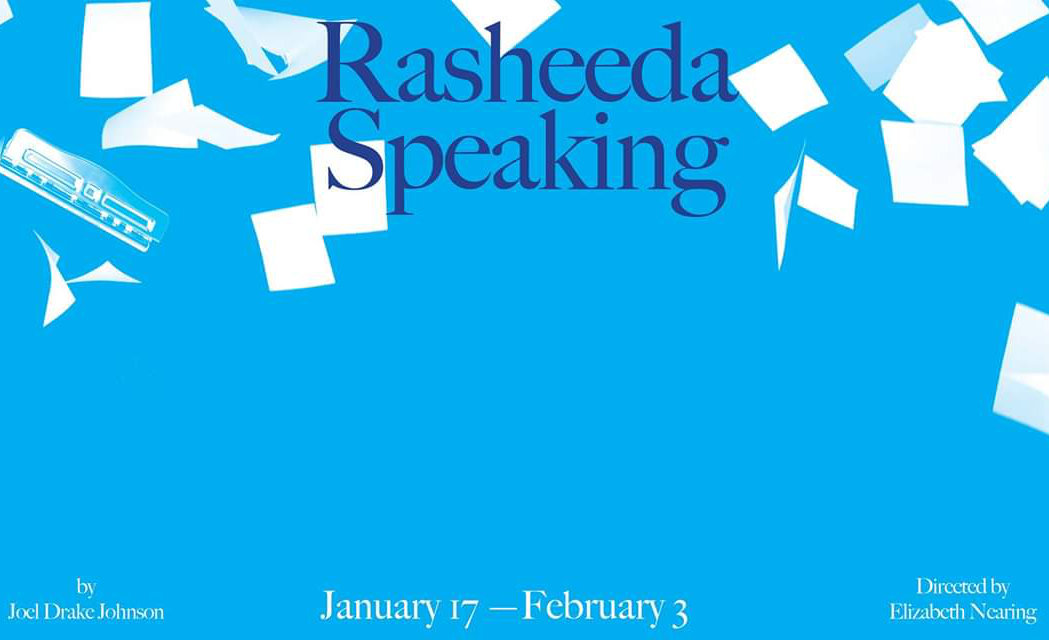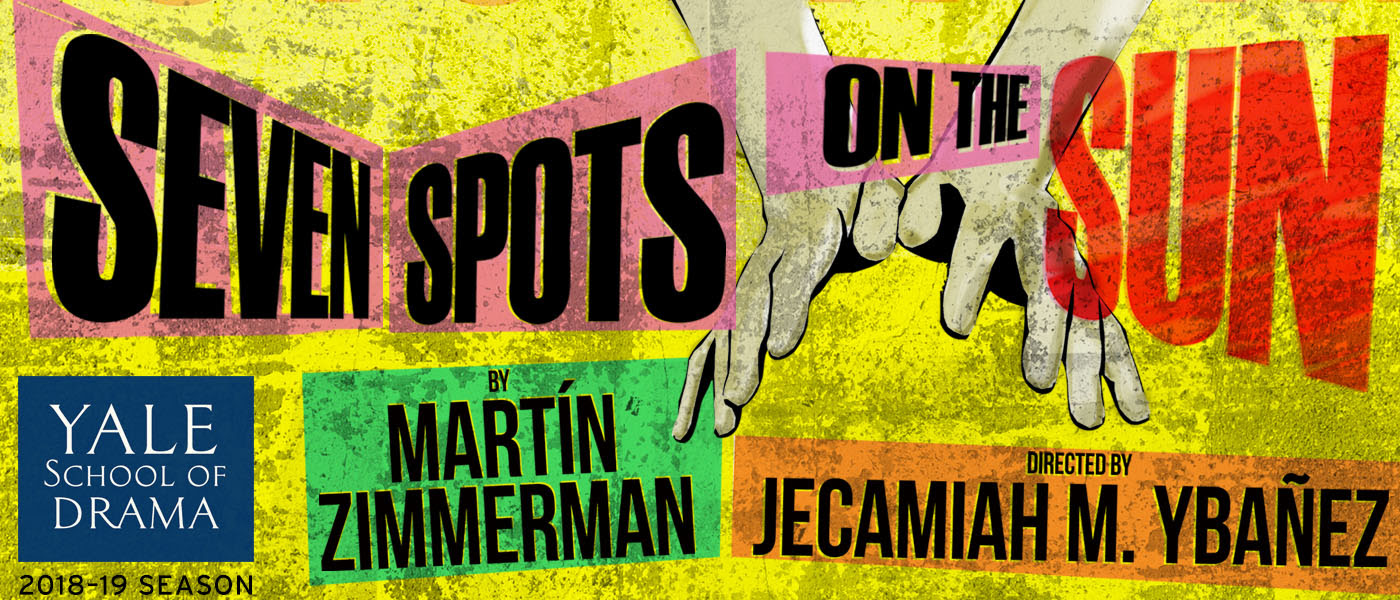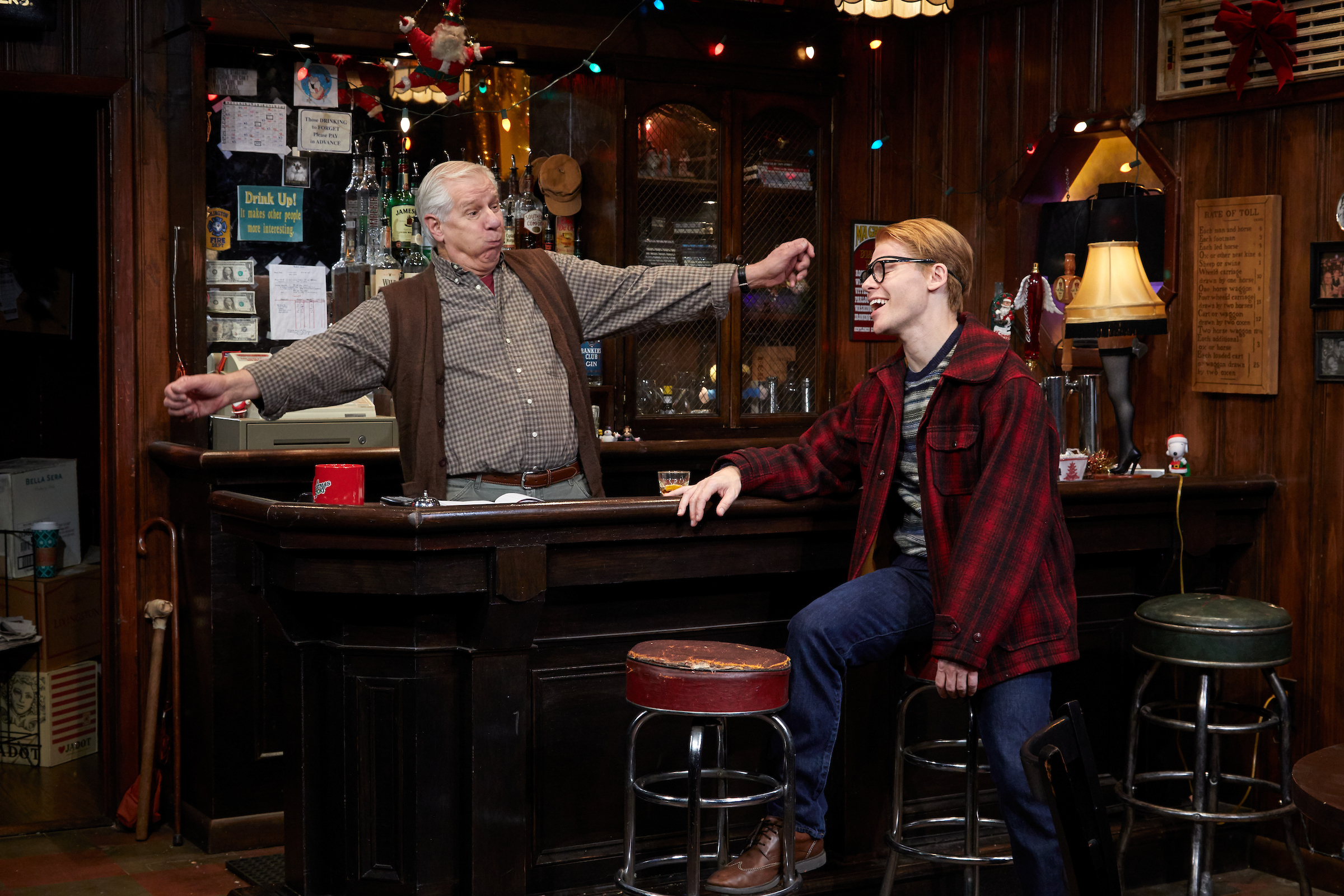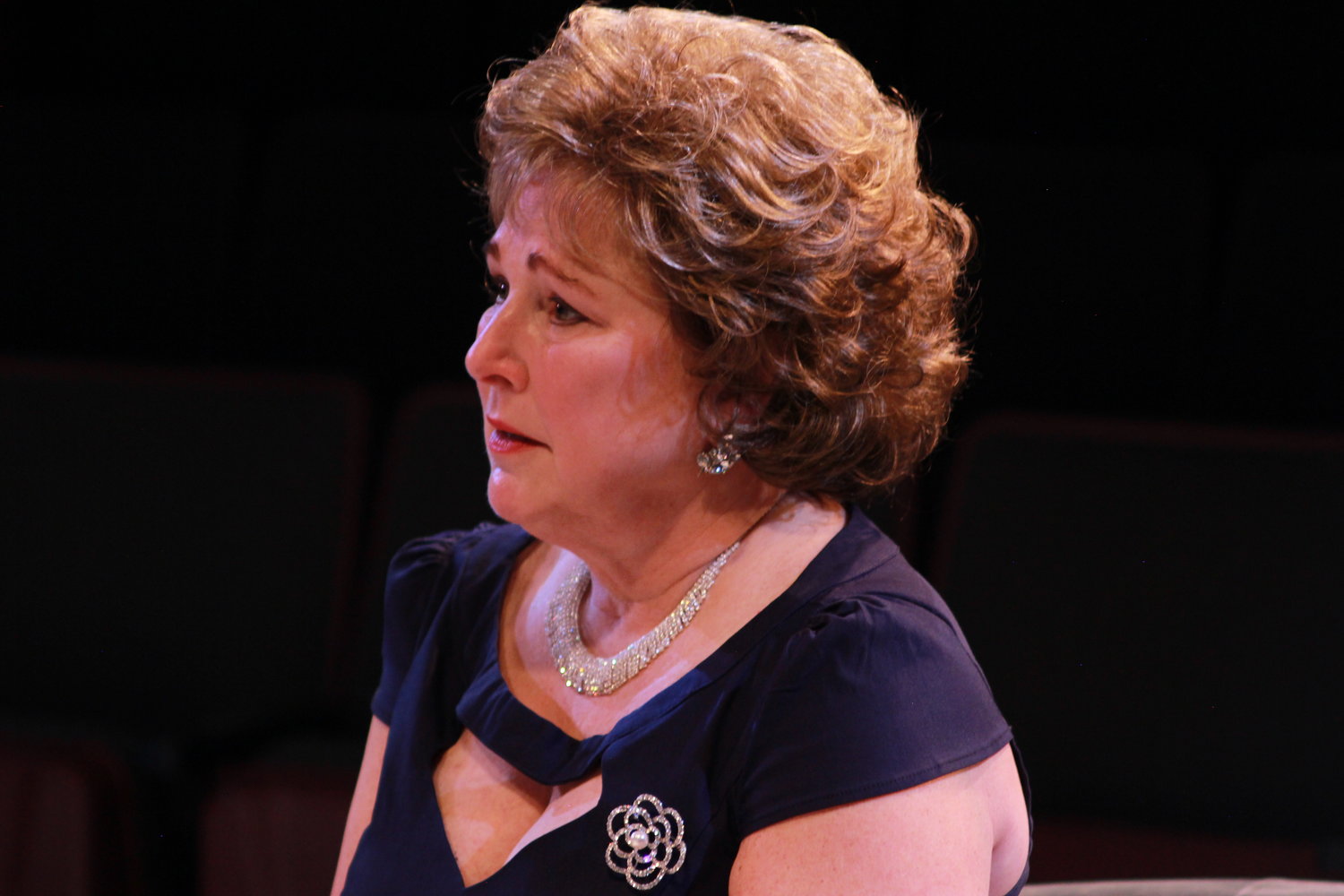Review of Trouble in Mind, Yale School of Drama
The third thesis show at the Yale School of Drama for the 2018-19 season is a powerful play not often produced. In 1957, Alice Childress’s Trouble in Mind made its author the first African American playwright to win an Obie, and she would have been the first African American author on Broadway until she balked at changes she was expected to make to the play. Consequently, the play is much less-known than it deserves to be. Aneesha Kudtarkar, a third-year director at YSD, performs a considerable public service in staging Childress’ play. One can’t help wondering why it hasn’t shown up on Connecticut stages before now, while hoping that it will soon. To say nothing of New York, where the play has yet to receive a mainstream production.
The cast of the Yale School of Drama production of Trouble in Mind, directed by Aneesha Kudtarkar; foreground: Al Manners (Stephen Cefalu, Jr.); onstage, right to left: Bill O’Wray (Hudson Oz), Judy Sears (Zoe Mann), Wiletta Mayer (Ciara Monique McMillian), John Nevins (Gregory Saint Georges), Sheldon Forrester (Manu Nefta Heywot Kumasi), Millie Davis (Amandla Jahava), Eddie Fenton (Devin White), not pictured: Henry (John Evans Reese) (photos by T. Charles Erickson)
It’s not surprising that the Off-Broadway version of the play would be seen as not commercially viable, in 1957. It’s an ensemble piece but the play’s heart and soul is an African American actress, Wiletta Mayer, played here by second-year actor Ciara Monique McMillian in a commanding, charismatic performance. The main white male role is a posturing and mostly unsympathetic director, Al Manners (Stephen Cefalu, Jr.), seconded by an even less prepossessing main actor, Bill O’Wray (Hudson Oz). These are good roles—and Cefalu and Oz do great work showing us the dominant viewpoint as seen from a different perspective—but the parts might not attract actors who want to be liked. The rest of the cast are the actors, some of them rather fledgling, who have been gathered for a production of a liberal race play, “Chaos in Belleville,” and two other white men, one Manners’ put-upon assistant, Eddie Fenton (Devin White), and the other the theater’s factotum, a doting and doddering elderly Irish gent, Henry (John Evans Reese).
Why did I say “public service”? Perhaps I should amend that: a service for the white viewing-public, rather. Since white folks can’t be in a room without white folks in it, Trouble in Mind provides a rather striking view of what it’s like when we’re not around. Sure, there are many plays—not least A Raisin in the Sun, which was the first play by an African American on Broadway—that show life among non-whites. But Childress’ play—quite often comically but always knowingly—shows us blacks who move back and forth between their normal manner and their manner when whites are present. Add to this mix how the play they are rehearsing makes them act—think Gone with the Wind—and you’ve got a play about race that is acute, astute and, now and then, revelatory.
Millie Davis (Amandla Jahava), Wiletta Mayer (Ciara Monique McMillian)
The first act mainly provides the comic aspects of this situation: the dissembling, the false bonhomie, the earnest entreaty by Judy Sears (Zoe Mann), the white ingenue, that the cast come to her daddy’s house in Bridgeport for some barbeque, the pointed jousts between the two would-be theater divas, Millie Davis (Amandla Jahava) and Wiletta, and Wiletta’s advice to cub actor John Nevins (Gregory Saint Georges) about how to succeed in a white man’s world. As the rehearsal goes on, we hit snags, whether Manners’ hissy fit over not getting Danish in the breakfast delivery, or Judy’s uncertainty about where exactly “downstage” is. The point is that the company is all on tenterhooks, with no one sure of how secure their careers are. So, regardless of provenance, all are in thrall to a monster we call “the theater.”
In the second act, the play being rehearsed becomes the problem: Wiletta cannot abide what she is called upon to perform. The play is supposed to–in Manners’ view—milk the white audience’s tears at the atrocity of the senseless killing of an innocent black youth, thus creating an awareness of injustice. And yet, in Wiletta’s view, that point could be made equally well or better by black characters who aren’t stereotypes and whose actions have the ring of truth. The passion behind her position becomes a major catalyst for dissatisfaction in the company.
Wiletta Mayer (Ciara Monique McMillian), Al Manners (Stephan Cefalu, Jr.)
It’s the question of what is most “true” (and what that has to do with a manifest fiction like theater) that eats away at the company’s resolve. At one point, Manners, trying to speak for everyone, asserts that none of them have ever seen a lynching, thank God. That’s when the elder of the company, Sheldon (Manu Nefta Heywot Kumasi), has to speak up.
Up until that point, Sheldon has been willing to play a familiar stereotype, the genial, elder black man, able to speak frankly to white folk because capable of couching his views in a humorous presentation. It’s a wonderful portrayal by Kumasi, full of appropriate mannerism, but when called upon to tell what he saw, Sheldon becomes dramatically relevant to the play-within-the-play and a source of knowledge and of pain that outweighs anyone else in the room. After that, there’s no easy way to recover the balance of power that the process requires. What’s more, despite Manners’ diatribe, vividly delivered by Cefalu, about how brave “Chaos in Belleville” is, and how no one is ready to see blacks as they really are, the whites can only feel inadequate and the blacks feel even more pointedly the silliness of what the play asks of them. It’s not only a travesty of the story “Chaos” is supposed to be telling but a much more sobering travesty of events like those Sheldon witnessed.
Childress’ play, in Kudtarkar’s production, is sharp too in its eye for the other kinds of subservience on hand. A character who might be gay—Eddie—is often the target of Manners’ caustic ire, and Henry, in a conversation with Wiletta, reveals his own sense of the wrongs of history, the kinds of scars that genial “blarney” is meant to hide. Even Manners has his vulnerability—as a put-upon breadwinner paying alimony, and as the man answerable to the money backing this risky, well-meant, but ultimately vain endeavor. And speaking of vain, there’s Millie, a woman who, unlike the others, doesn’t really need the acting job, she just likes to show off (not least a diamond bracelet). Childress manages to play with types as comic material while interrogating how and why we all playact. It’s a bracing theatrical experience, and Kudtarkar’s cast handles well the moves between broad comedy, more subtle satire, and the serious confrontation of difficult truths.
Alexander McCargar’s scenic design makes the University Theater feel like the venerable space it is, filling the stage with the odds and ends of theatrical rehearsal and eventually removing a wall for a dramatic sense of the real people behind the play. Lighting, costumes and sound—including a recording of applause—all are topnotch and serve to create a sense of the real 1950s, and of the theater of that time. And downstairs during intermission and after the show, “For Your Consideration,” a film installation by Erin Sullivan, makes wry comment on the whole question of breakthrough African American artists in a field seen as normatively white: as years flash by, we see white woman after white woman gripping the Best Actress Oscar and emoting (soundlessly), until the sole nonwhite winner—Halle Berry—can be heard, thanking a history of all those who got passed over. It’s quite striking. After Berry, everyone who is shown seems part of a self-congratulatory “business as usual,” a cultural matrix that sustains itself by replicating itself, without apology. The film comments on Wiletta’s struggle—believing in the theater even as she must face how relentlessly it fails to deliver what it seems to promise.
Trouble in Mind
By Alice Childress
Directed by Aneesha Kudtarkar
Scenic Designer: Alexander McCargar; Costume Designer: Stephanie Bahniuk; Lighting Designer: Emma Deane; Sound Designer: Emily Duncan Wilson; Projection Installation Designer: Erin Sullivan; Production Dramaturg: Sophie Siegel-Warren; Technical Director: Rajiv Shah; Stage Manager: Fabiola Feliciano-Batista
Cast: Stephen Cefalu, Jr., Gregory Saint Georges, Amandla Jahava, Manu Nefta Heywot Kumasi, Zoe Mann, Ciara Monique McMillian, Hudson Oz, John Evans Reese, Devin White
Yale School of Drama
February 2-8, 2019


